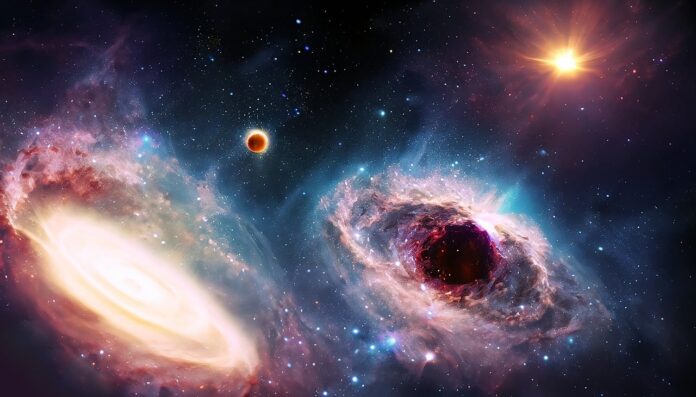In the grand cosmic ballet, stars illuminate the night sky, captivating our imagination and symbolizing the eternal dance of creation and destruction. But not all stellar journeys end peacefully. For massive stars, their demise is a cataclysmic event that unleashes unimaginable energy and transforms them into celestial fireworks known as supernovae. In this article, we embark on a voyage through the cosmos to explore the awe-inspiring phenomenon of supernovae, delving into their explosive deaths and the profound impact they have on the universe.
The Life Cycle of Massive Stars
To comprehend the extraordinary spectacle of a supernova, we must first understand the life cycle of massive stars. These stellar giants, with masses several times greater than that of our Sun, blaze brightly, fueling their radiance through the fusion of hydrogen into helium. However, their massive cores create intense pressure and heat, leading to the synthesis of heavier elements like carbon, oxygen, and beyond.
Stellar Nucleosynthesis: Forging Cosmic Elements
Within the fiery crucible of massive stars, nucleosynthesis reigns supreme. The relentless gravitational pressure and soaring temperatures facilitate the fusion of elements, birthing new atomic species. It is through this cosmic alchemy that stars generate the vast array of elements that constitute the building blocks of the universe, including the elements essential for life as we know it.
The Birth of Supernovae
As massive stars approach the end of their lives, their core becomes a crucible of nuclear fusion, culminating in the production of iron. Iron, however, marks the limit of a star’s fusion capability. With no energy left to sustain the core against gravity’s relentless pull, the star faces its inevitable fate: a supernova explosion.
Types of Supernovae
There are two primary types of supernovae: Type I and Type II. Type I supernovae occur in binary star systems, where a white dwarf—a remnant of a lower-mass star—accretes matter from its companion until it reaches a critical mass, triggering a runaway nuclear fusion reaction and a spectacular explosion. Type II supernovae, on the other hand, are the result of the core collapse of a massive star, with the outer layers expelled into space.
The Cosmic Fireworks
The cataclysmic explosion of a supernova is a breathtaking display of cosmic fireworks. For a brief period, the energy released outshines an entire galaxy, as the dying star outshines its host. The explosion hurls forth shockwaves, scattering elements forged in the star’s core into the surrounding space. Supernovae serve as the birthplaces of heavy elements, dispersing them across the cosmos, ready to become the ingredients of future stars, planets, and even life itself.
Stellar Remnants: Neutron Stars and Black Holes
In the aftermath of a supernova, the remnants left behind provide further intrigue. For less massive stars, the core collapse results in the formation of a dense and rapidly spinning neutron star—an exotic object pulsating with energy. In the case of extremely massive stars, the core collapse leads to the formation of a black hole—an enigmatic entity where gravity is so intense that even light cannot escape its grasp.
The Impact on the Universe
Supernovae have a profound impact on the universe at large. These cosmic explosions enrich the interstellar medium with heavy elements, which, in turn, become the building blocks of future generations of stars and planetary systems. Supernovae also play a crucial role in stellar feedback, initiating the process of triggering star formation and regulating galactic evolution.
The explosive deaths of massive stars, witnessed as supernovae, are both mesmerizing and transformative events. They serve as cosmic forges, creating and dispersing elements essential for the formation of new stars, planets, and life itself. Through the explosive demise of these stellar behemoths, the universe evolves and unfolds, reminding us of the intricate interplay between creation and destruction. As we gaze upon the brilliance of a supernova, we witness the eternal cycle of cosmic rebirth and find ourselves humbled by the vastness and splendor of the cosmos.




